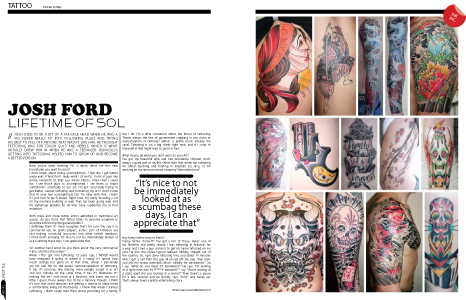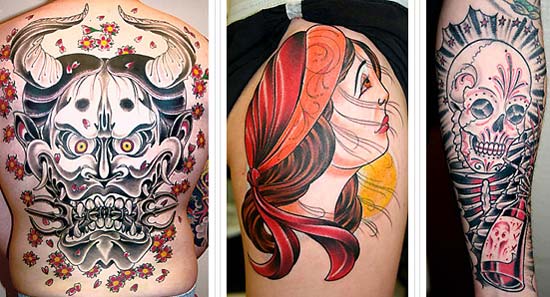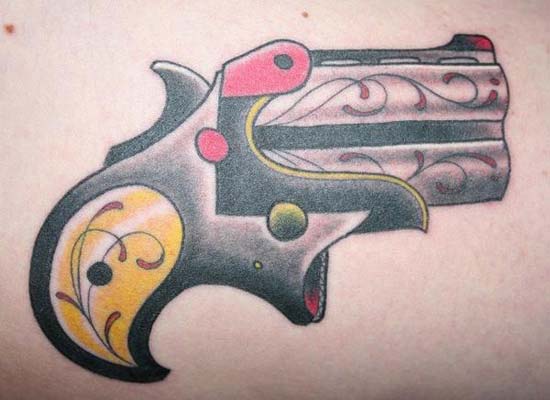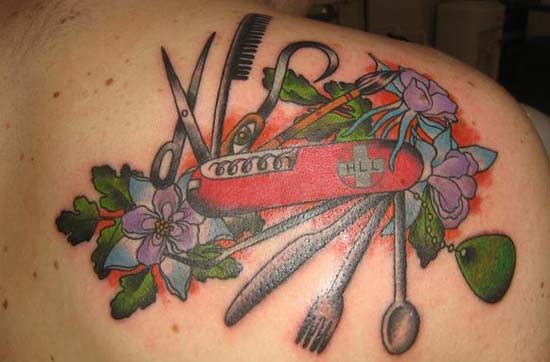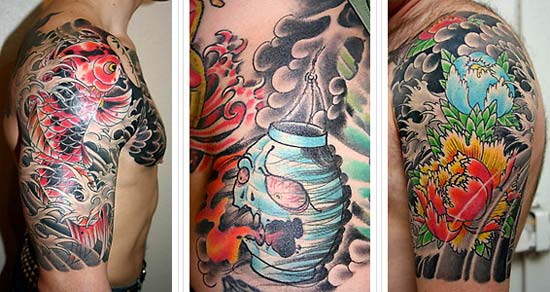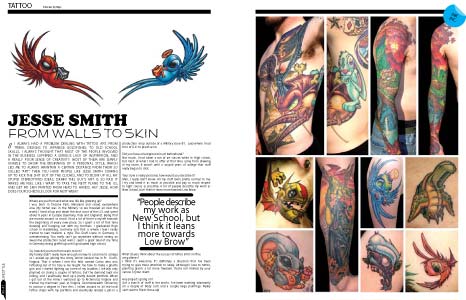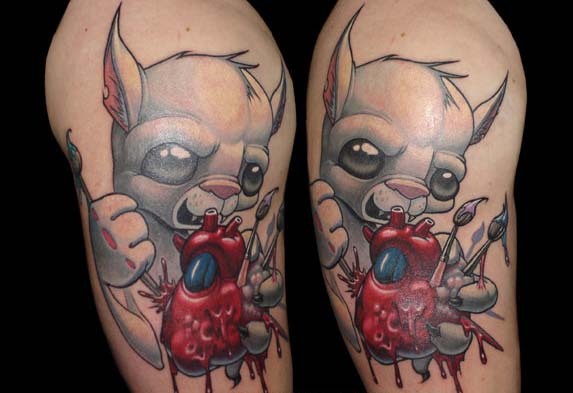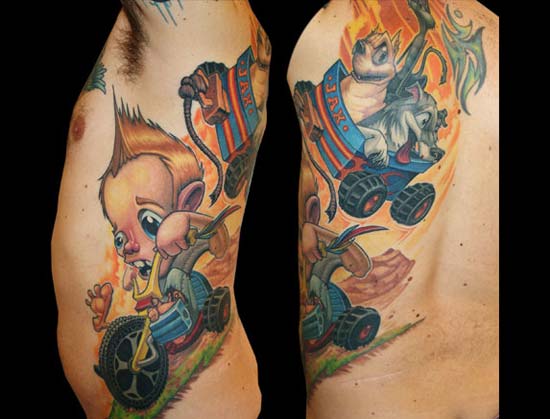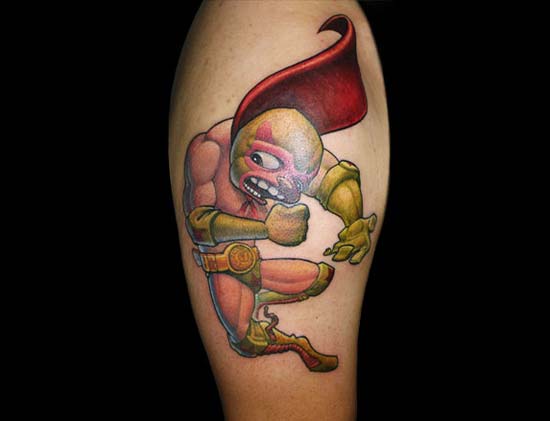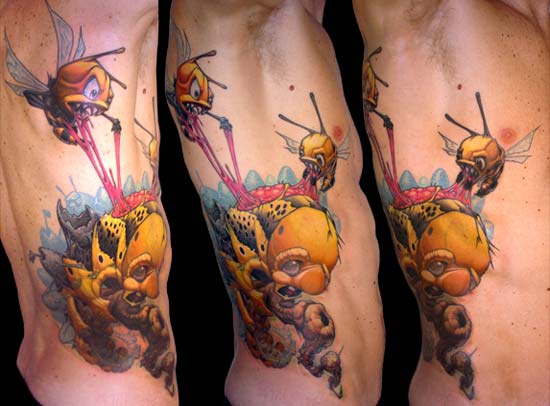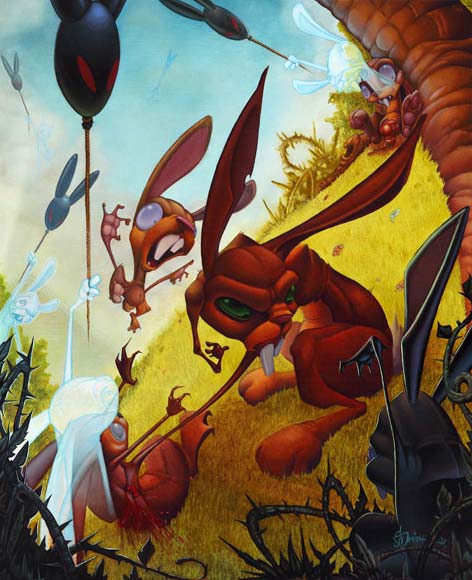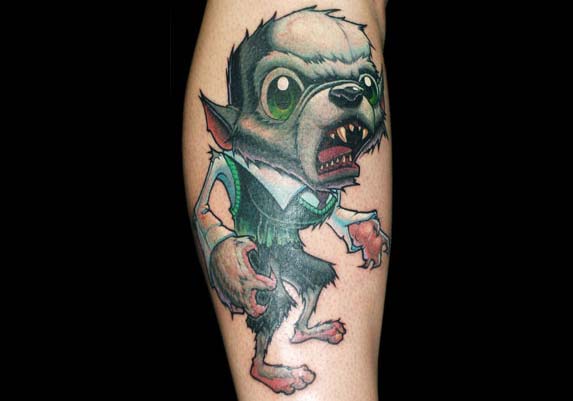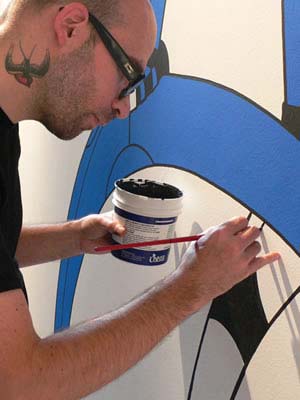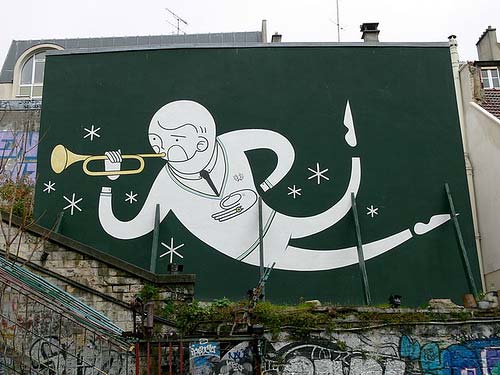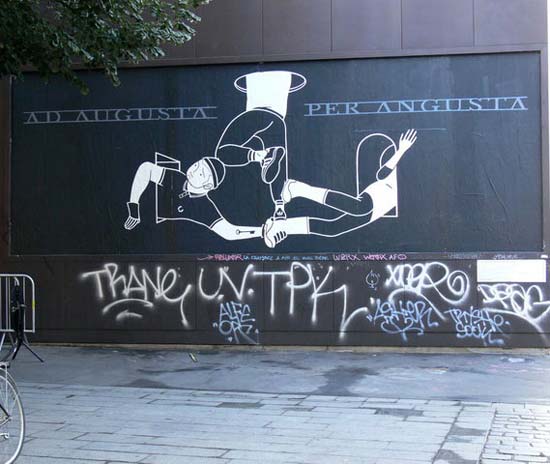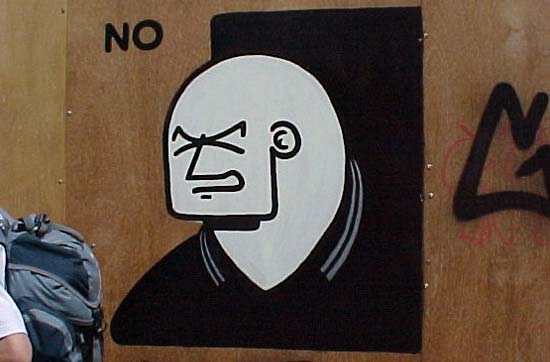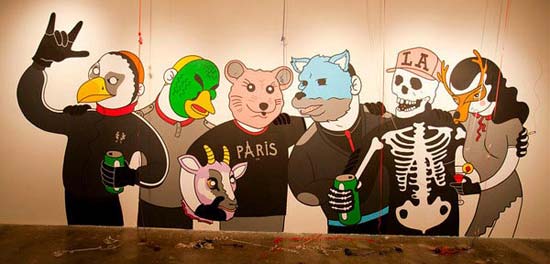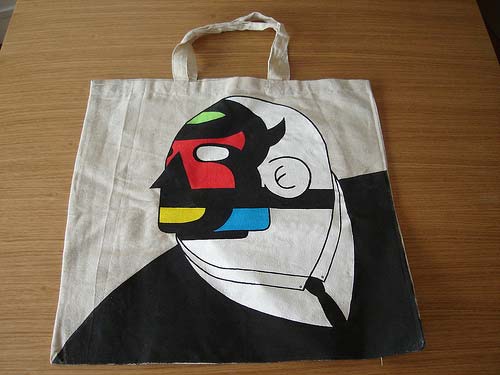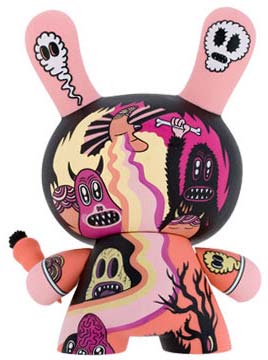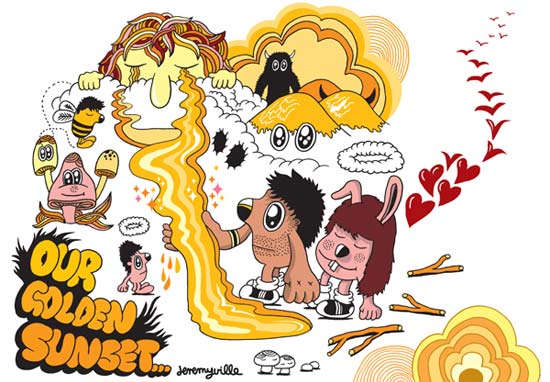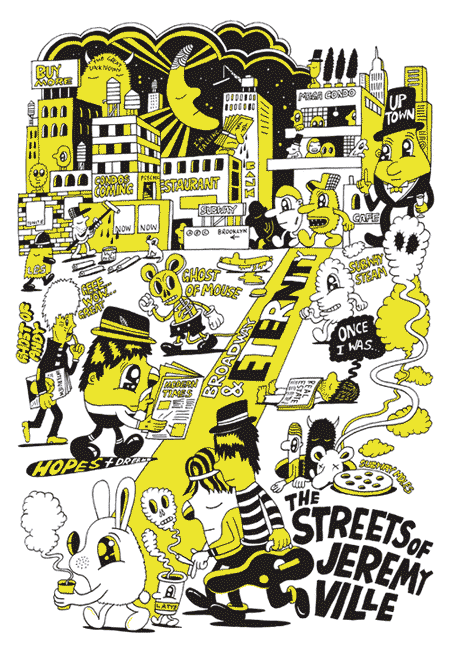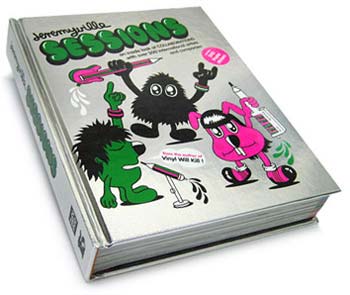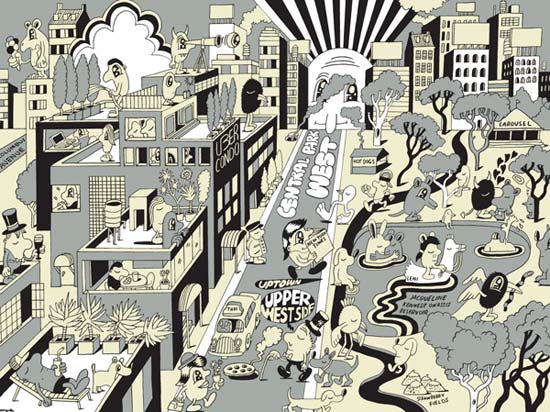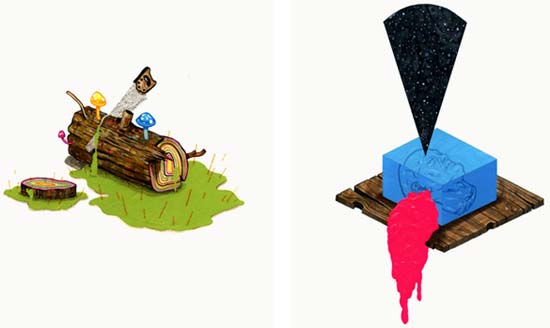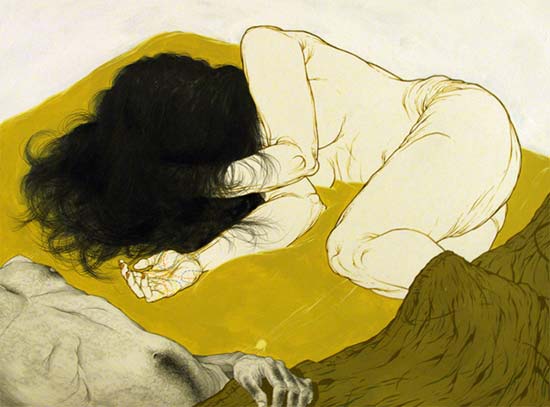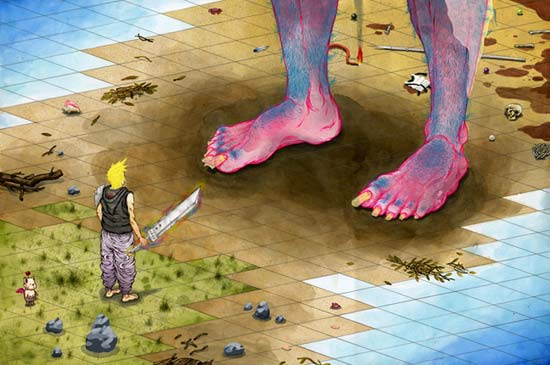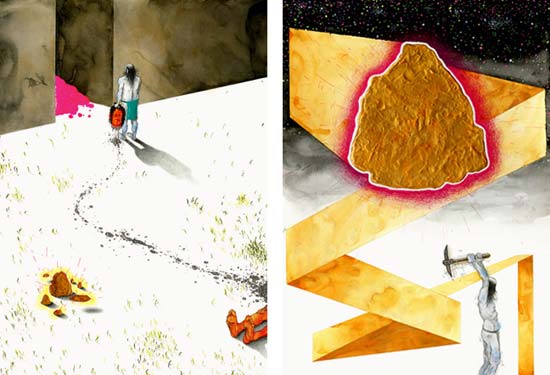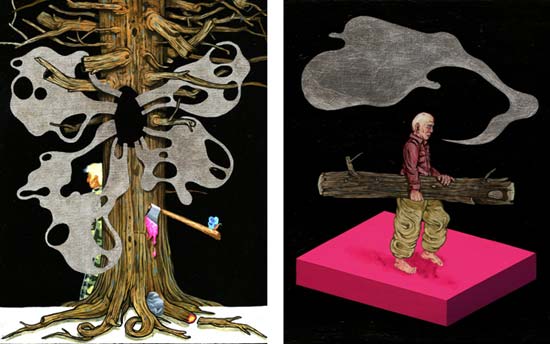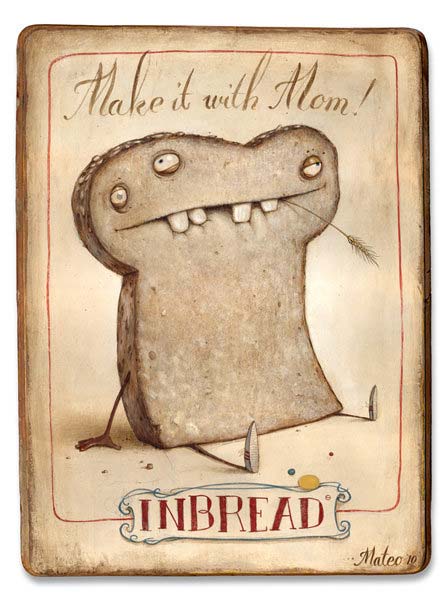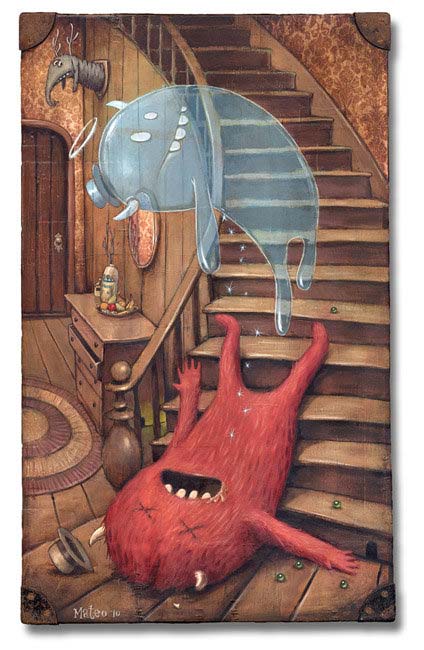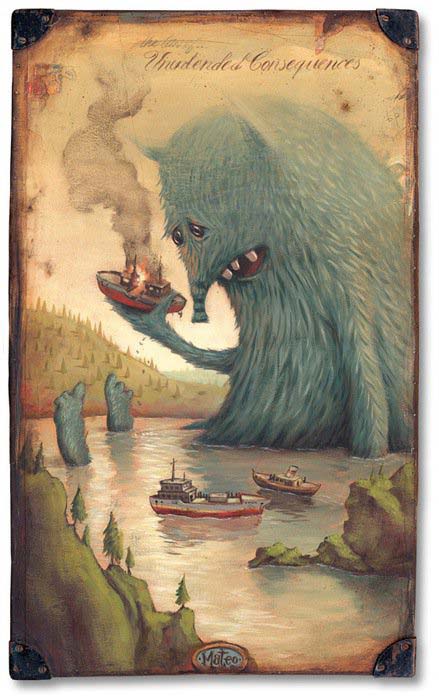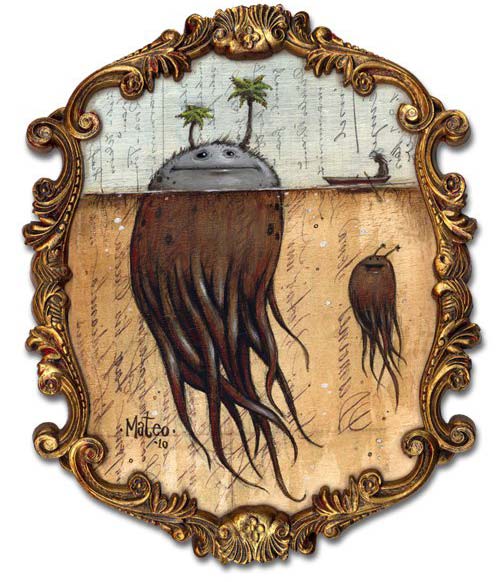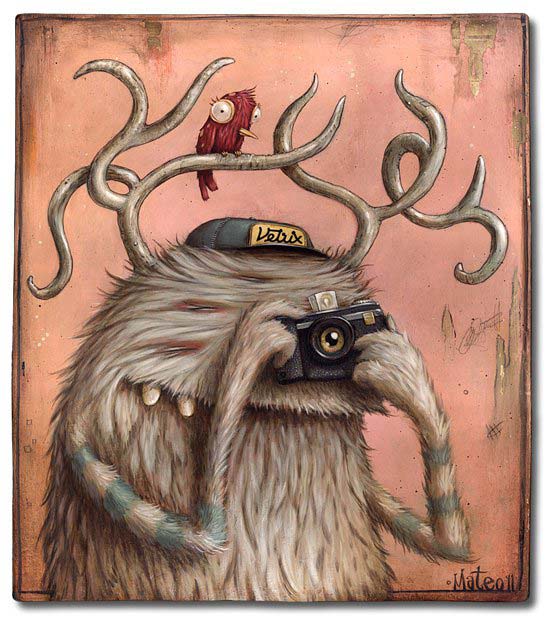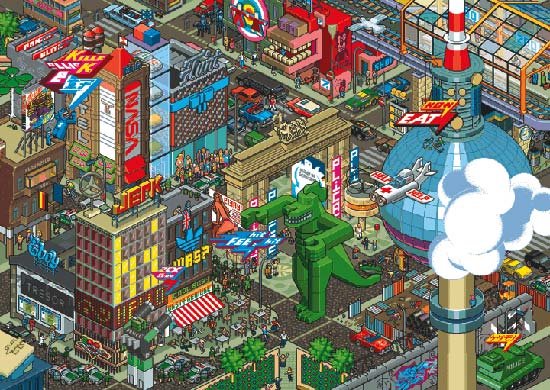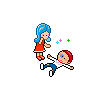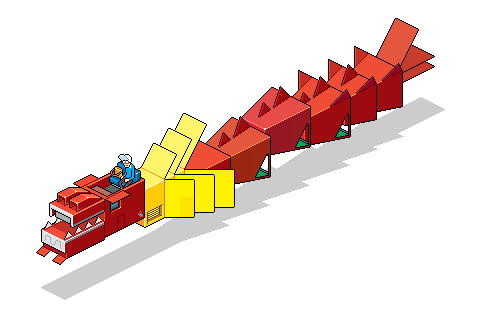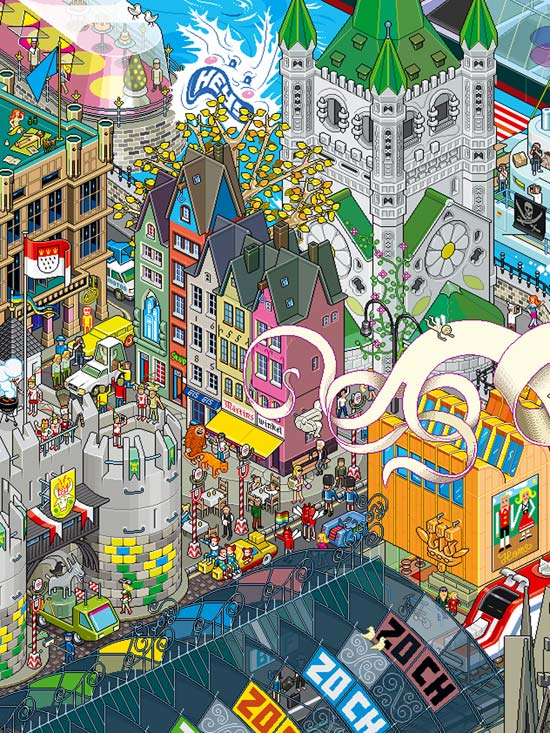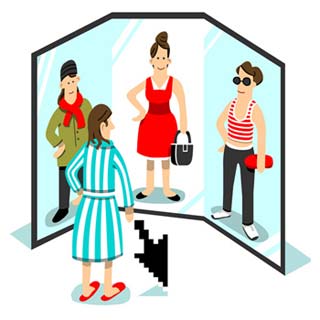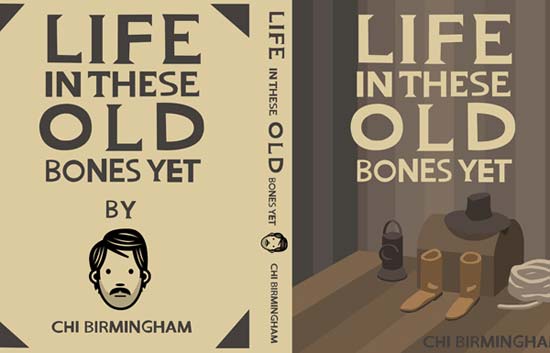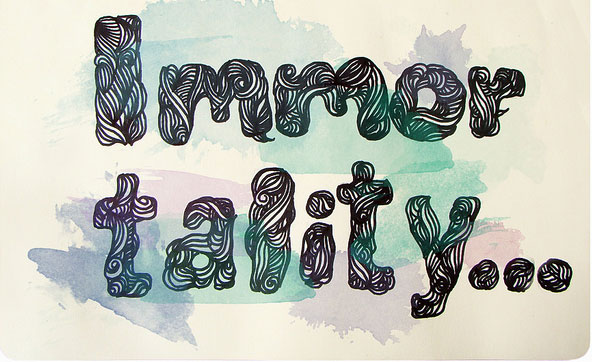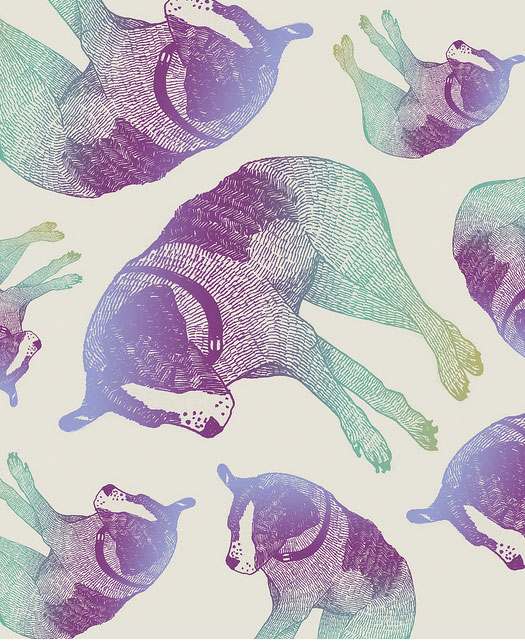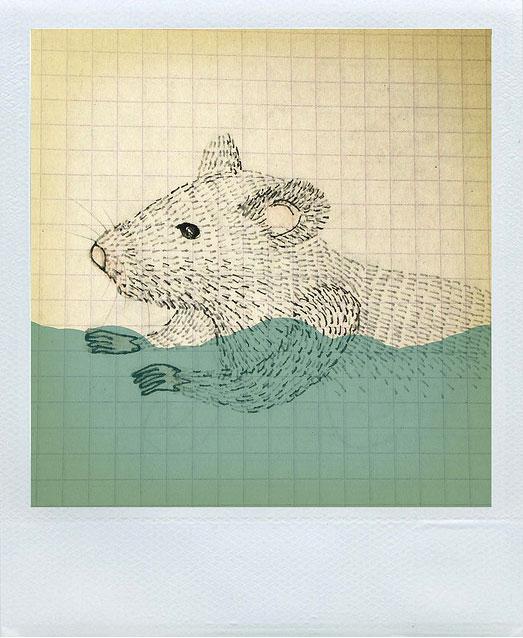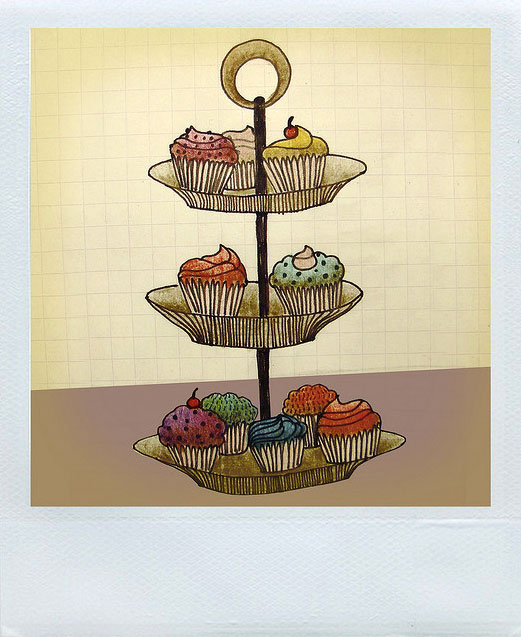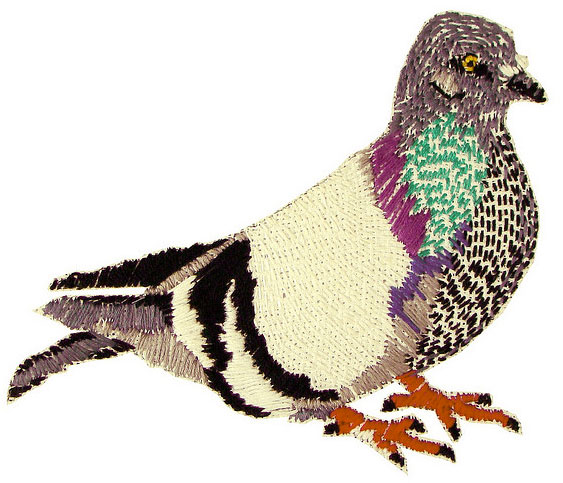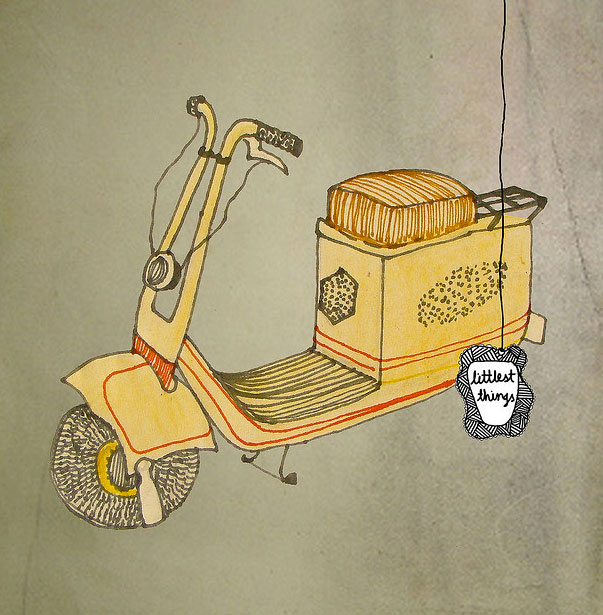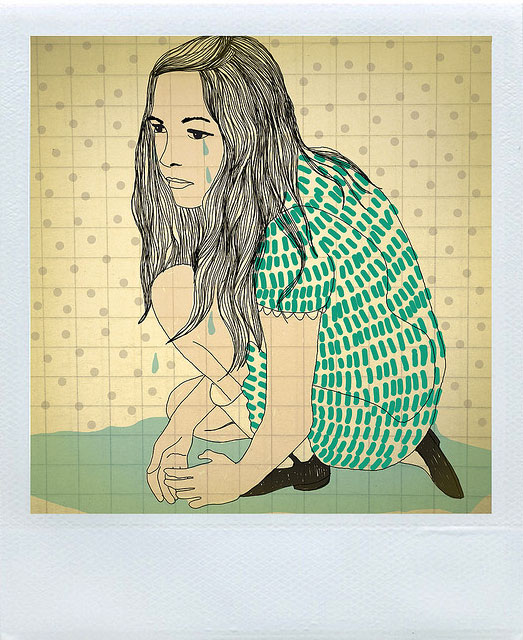James Jirat Patradoon interview
Born in Thailand and raised in Sydney since the age of one, James Patradoon grew up exposed to the richness of both Asian and Aussie cultures.
Spending most of his childhood reading and drawing cartoons, he woke up one day as a teenager facing this terrible truth about his future: no matter the intensity of his passion for superheroes, he won’t ever become one of them. So what? Should he renounce without even trying? That’s not what a superhero would have done anyway, so James took his super pen, and decided to go further into his dream, helped along by his superpowers to create fantastic images.
More about James Jirat.
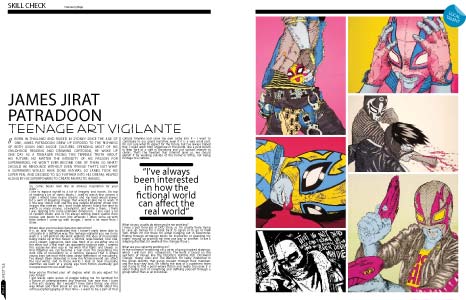
Double spread page interview of James Jirat Patradoon published in Acclaim magazine
SO, COMIC BOOKS LOOK LIKE AN OBVIOUS INSPIRATION FOR YOUR WORK…
I like to expose myself to a lot of imagery and stories. On top of reading a lot of comic books, I used to watch four movies a night. I would have insane dreams and my head would always be a swirl of lingering images that would inspire me to work. It is the way stories look and the way people interpret stories into images that interest me. I don’t know where I found the time to watch so many movies, screenprint, and write a thesis. I think I was tapping into some unknown dimension. I also read a lot of random books and so I’m always writing down quotes from movies and books to turn into artworks. I often come up with titles before I come up with images. I write a lot more than I draw.
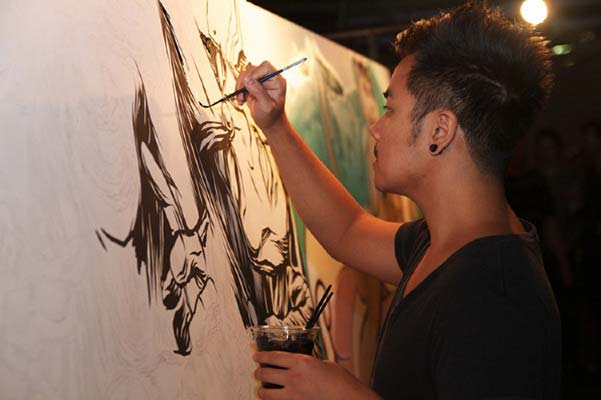
James Jirat Patradoon photo portrait
WHERE DOES YOUR MASKED CHARACTER COME FROME?
It is an idea that snowballed that I haven’t really been able to articulate in a definitive way. The teenage vigilante you see in my work is a self-portrait. My work explores the idea of masculinity being made up of two halves: a normal, level-headed, nice side, and a violent, aggressive, dark side. Most of us are either one or the other, but a ‘real man’ can apparently balance both. I created this aggressive alter ego in my work that fights and bleeds so that together we can become a ‘real man’. I’m presenting the dark side of masculinity as a cartoon, because that is where young boys get most their ideas about definitions of masculinity. I’ve always been interested in how the fictional world can affect the real world, and in these works I look at how masculine identities we learn at a young age from fiction eventually get incorporated into our adult lives.
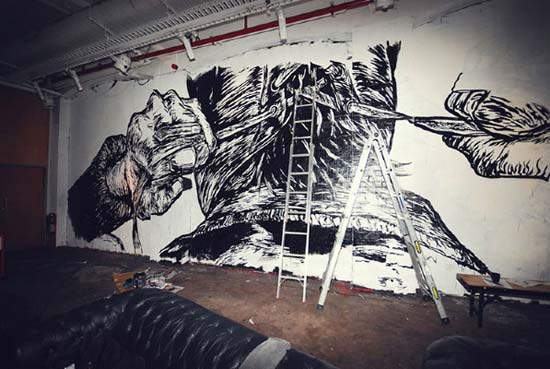
Mural huge painting by James Jirat Patradoon
NOW YOU’VE FINISHED YOUR ART DEGREE, WHAT DO YOU EXPECT FOR YOUR FUTURE?
I get waves upon waves of people telling me I’m destined for a future of unemployment and financial ruin now that I have a fine arts degree, but I wouldn’t have done things any other way. When you think about an era in time you think about the art/music/photography of that time – I want to be a part of that cultural timeline and carve my own niche into it – I want to contribute to our grand narrative, even if it is a very small part. I’m not sure what to expect for the future, but I’ve always hoped that I could work from anywhere in the world, like a park bench in New York of a café in Barcelona and just upload artwork to clients. That’s the freedom that internet gives us, we should exploit it by working outside of the home or office, not being hostage to a cubicle.
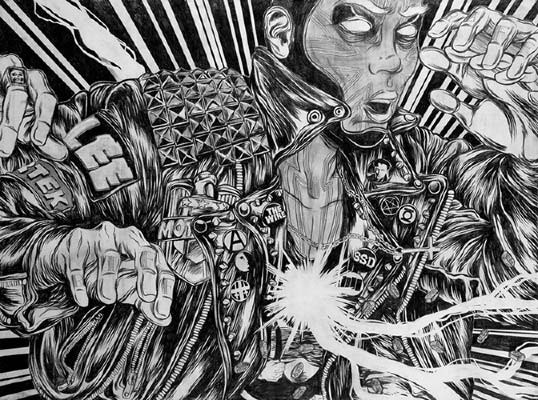
Drawing by the Thai and Australian artist James Jirat Patradoon
WHAT DO YOU USUALLY DO WHEN YOU’RE NOT WORKING?
I have a part time job at DVD Store, so I’m usually there trying to save up money for a ticket back to Japan or to go to New York. When I’m not there I’m either hanging out in bookstores flicking through art/design books for inspiration or spending my nights staying up wasting my time one way or another, I have a sleeping disorder, I’m awake at the strangest hours.
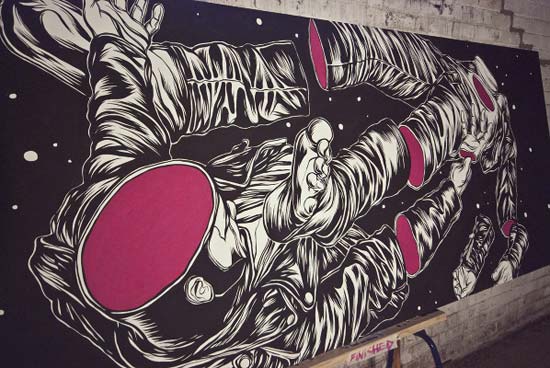
Street art by James Jirat Patradoon
WHAT ARE YOU CURRENTLY WORKING ON?
At the moment I’m working on a series of gang inspired drawings, which I will turn into screenprints. The work is based on the aesthetic of movies like The Outsiders, Rumble Fish, Clockwork Orange, Young Guns and The Warriors. I’m really interested in the group identity that gangs present through their members and the way they look. I’m taking the idea of a superhero team and trying to find a point where fiction and reality crossover, it is about being part of something and defining yourself through a group rather than as an individual.
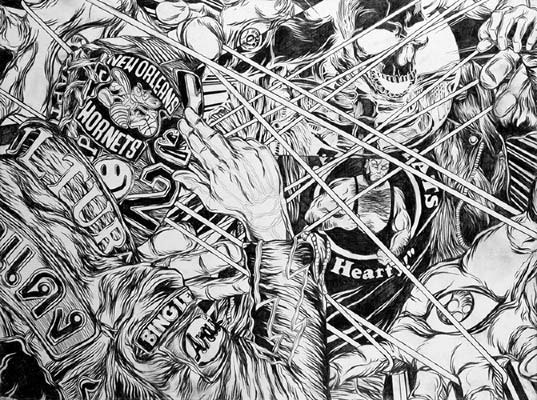
James Jirat Patradoon black and white artwork
